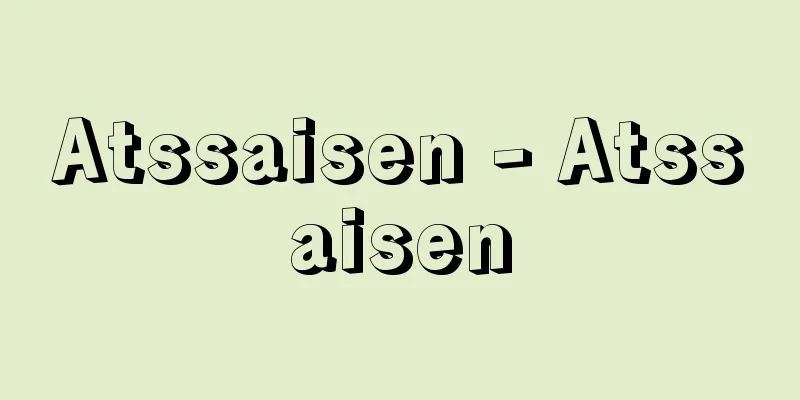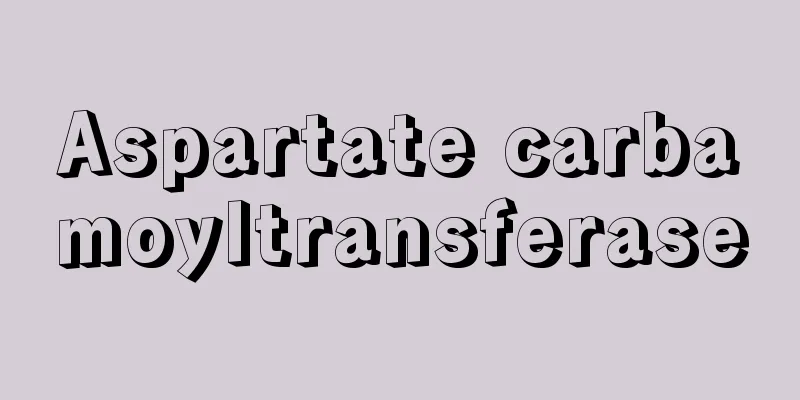Corporate pension - kigyōnenkin

|
A private pension is a voluntary pension provided by a company as part of employee welfare. In today's developed countries, it plays a role in supplementing basic security provided by public pensions. Corporate pensions in Japan have become widespread as a process of converting part or all of retirement benefits, which were once paid as lump sums, into pensions. They have rapidly spread since the establishment of the Tax-Qualified Retirement Pension System by the amendment of the Corporation Tax Act in 1962 (Showa 37) and the Employee Pension Fund System (implemented in 1966) by the amendment of the Employee Pension Insurance Act in 1965 (implemented in 1966). After that, the Defined Contribution Pension Act (implemented in the same year) and the Defined Benefit Corporate Pension Act (implemented in 2001 (Heisei 13) were enacted, and in 2013, the Act to Partially Amend the Employee Pension Insurance Act, etc. to Ensure the Soundness and Reliability of the Public Pension System, and in 2016, the Act to Partially Amend the Defined Contribution Pension Act, etc. were enacted, and legal systems have been developed to respond to the changes in the environment surrounding corporate pensions. The advantages of corporate pensions compared to lump-sum retirement payment systems include, from the company's perspective, the ability to level out the increased burden that comes with the aging of employees (by pre-saving funds) and generous tax benefits, while from the employee's perspective, retirement benefits are protected by external savings. Below is an overview of Japan's main systems. [Yasuhiko Yamazaki September 16, 2016] Defined Benefit Corporate PensionA pension with a pre-determined benefit amount. In the past, there were problems with defined-benefit corporate pensions, such as employees' pension funds and tax-qualified retirement pensions, such as not having sufficient pension assets secured in the event of a company's bankruptcy. For this reason, the Defined Benefit Corporate Pension Law stipulates uniform standards for defined-benefit corporate pensions, such as funding standards, trustee responsibility, and information disclosure, and also provides tax measures. In addition, employees' pension funds are permitted to transition to corporate pensions that do not act as a proxy for old-age employees' pensions, and tax-qualified retirement pensions are abolished after a 10-year transitional period. There are two types of defined-benefit corporate pensions: "contract type" and "fund type." In the contract type, a company enters into a contract with a trust company or life insurance company based on pension regulations agreed upon by labor and management, and pension funds are managed and operated outside the parent company to pay pensions. In the fund type, a corporate pension is established with a legal personality separate from the parent company, and pension assets are managed and operated in the fund to pay pensions. [Yasuhiko Yamazaki September 16, 2016] Defined Contribution Pension PlanA pension in which the contributions are clearly separated for each individual, and the amount of benefits is determined based on the total of the contributions and the investment income. There are two types of defined contribution pension: "corporate" pensions implemented by employers for their employees, and "individual" pensions implemented by the National Pension Fund Association for the self-employed, National Pension No. 3 insured persons, company employees (only in cases specified by the regulations for corporate defined contribution pension subscribers), and public servants and other mutual aid subscribers. Subscribers are responsible for instructing the investment of their contributed contributions, and if they change jobs, they can transfer their pension assets to the corporate or individual pension plan of their new employer. [Yasuhiko Yamazaki September 16, 2016] Employees' pension fundA special corporation formed by business owners and employees that pays a portion of the salary-proportional portion of the national old-age employees' pension on behalf of the government (substitutional benefits) and tops up the company's own pension. Since its establishment in 1966, it has steadily developed as a pillar of Japan's corporate pension system, but due to the deterioration of the investment environment after the collapse of the Heisei bubble in 1990, the number of funds that are "undersubstitution" and whose assets do not meet the minimum liability reserves required to pay substitutional benefits has increased. As a result, the Act to Amend the Employees' Pension Insurance Act, etc. to Ensure the Soundness and Reliability of the Public Pension System, enacted in 2013, allows special dissolution of funds whose financial situation is below a certain standard, and the number of funds that are transferring to other systems or being dissolved is increasing. [Yasuhiko Yamazaki September 16, 2016] "Japan Association of Pension Actuaries (ed.), "Corporate Pension Management Handbook - Commentary on Important Themes in the New Corporate Pension Law" (2003, Toyo Keizai Inc.)" ▽ "Morito Hideyuki, Corporate Pension Law and Policy" (2003, Yuhikaku)" ▽ "Tsubono Takeshi, Comprehensive Commentary on New Corporate Pensions - The Actual Practice of System Selection and Transition, 2nd Edition (2005, Nihon Keizai Inc.)" ▽ "Nippon Life Insurance Company Corporate Actuarial Department (ed.), "Pension System Design Handbook - A Practitioner's Guide to Designing Defined Contribution and Cash Balance Plans" (2005, Toyo Keizai Inc.)" ▽ "Japan Pension Association (ed.), "Sustainable Public and Corporate Pensions" (2006, Gyosei Inc.)" ▽ "Ide Shosuke and Tobita Koji (eds.), Daiwa Institute of Research (eds.), "Corporate Management and Pension Management" (2006, Toyo Keizai Inc.)" ▽ "Defined Contribution Pensions for Companies," written by Mizuho Financial Group's Defined Contribution Pension Study Group (2007, Toyo Keizai Inc.)" ▽ "Easy-to-Understand Corporate Pensions," 2nd edition, written by Kubo Tomoyuki (2009, Nihon Keizai Shimbun Publishing Inc.)" ▽ "Corporate Pension Management," edited by Hakodate Junya and written by Miyata Shinichiro (2011, Toyo Keizai Inc.)" ▽ "Illustrated Guide to Pension Systems," 6th edition, edited by Mizuho Research Institute (2015, Toyo Keizai Inc.)" ▽ "Retirement Benefits and Corporate Pensions Handbook for Labor Unions," various annual editions, edited by the Japanese Trade Union Confederation and the NPO Finance and Pension Issues Education Dissemination Network (NPO Finance and Pension Issues Education Dissemination Network)" [Reference items] | | | | | |Source: Shogakukan Encyclopedia Nipponica About Encyclopedia Nipponica Information | Legend |
|
企業が従業員の福利厚生の一環として任意に実施する私的年金。今日の先進諸国では、公的年金による基礎的保障に上乗せする役割を担う。日本の企業年金は、かつて一時金で支給していた退職金の一部または全額を年金化する過程で普及してきたもので、1962年(昭和37)の法人税法改正による税制適格退職年金制度および1965年の厚生年金保険法の改正による厚生年金基金制度(1966年実施)の創設を契機に、急速に普及した。その後、2001年(平成13)には確定拠出年金法(同年実施)および確定給付企業年金法(2002年実施)、2013年には公的年金制度の健全性および信頼性の確保のための厚生年金保険法等の一部を改正する法律、2016年には確定拠出年金法等の一部を改正する法律が制定され、企業年金を巡る環境の変化に対応した法制度の整備が行われた。退職一時金制度と比べた企業年金のメリットとしては、企業側からは、従業員の高齢化に伴う負担増の平準化(資金の事前積立)が図れることや、手厚い税制上の優遇措置が受けられること、従業員側からは、資金の外部積立により退職金が保全されること、などがあげられる。以下は、日本の主要制度の概要である。 [山崎泰彦 2016年9月16日] 確定給付企業年金あらかじめ給付額が定められている年金。従来の厚生年金基金や税制適格退職年金などの確定給付型の企業年金では、企業倒産の際に年金資産が十分に確保されていないなどの問題があった。そのため、確定給付企業年金法により、確定給付型の企業年金について、積立基準、受託者責任、情報開示などの統一的な基準を定め、あわせて税制措置を行うこととした。また、厚生年金基金については、老齢厚生年金の代行を行わない企業年金への移行を認め、税制適格退職年金については、10年の経過措置を設けて廃止することとした。確定給付企業年金には「規約型」と「基金型」がある。規約型は、労使が合意した年金規約に基づき、企業と信託会社・生命保険会社などが契約を結び、母体企業の外で年金資金を管理・運用し、年金給付を行う。基金型は、母体企業とは別の法人格をもった基金を設立したうえで、基金において年金資産を管理・運用し、年金給付を行う企業年金である。 [山崎泰彦 2016年9月16日] 確定拠出年金拠出された掛金が個人ごとに明確に分離され、掛金とその運用収益との合計額をもとに給付額が決定される年金。確定拠出年金には、事業主が従業員を対象として実施する「企業型」と、国民年金基金連合会が自営業者、国民年金の第3号被保険者、企業の従業員(企業型確定拠出年金加入者については規約に定めた場合に限る)、公務員等共済加入者を対象として実施する「個人型」がある。拠出された掛金の運用の指図は加入者が自ら行い、転職した場合には年金資産を転職先の企業型年金や個人型年金に移管することができる。 [山崎泰彦 2016年9月16日] 厚生年金基金事業主と従業員とで組織される特別の法人で、国の老齢厚生年金の報酬比例部分の一部を国にかわって支給(代行給付)し、企業独自の年金を上乗せする。1966年に創設されて以来、日本の企業年金の柱として順調に発展したが、1990年の平成バブル崩壊以降の運用環境悪化により、保有資産が代行給付の支給に必要な最低責任準備金に満たない「代行割れ」基金が増えた。そのため、2013年に制定された公的年金制度の健全性および信頼性の確保のための厚生年金法等の一部を改正する法律により、財政状況が一定の基準以下の基金については特例的な解散が認められることになり、他制度への移行や解散を行う基金が増加している。 [山崎泰彦 2016年9月16日] 『日本年金数理人会編『企業年金マネジメント・ハンドブック――新企業年金法の重要テーマ解説』(2003・東洋経済新報社)』▽『森戸英幸著『企業年金の法と政策』(2003・有斐閣)』▽『坪野剛司編『総解説 新企業年金――制度選択と移行の実際』第2版(2005・日本経済新聞社)』▽『日本生命保険企業保険数理室編『年金制度設計ハンドブック――実務者のための確定拠出年金・キャッシュバランスプラン設計の手引き』(2005・東洋経済新報社)』▽『日本年金学会編『持続可能な公的年金・企業年金』(2006・ぎょうせい)』▽『井出正介・飛田公治監修・大和総研編『企業経営と年金マネジメント』(2006・東洋経済新報社)』▽『みずほフィナシャルグル―プ確定拠出年金研究会著『企業のための確定拠出年金』(2007・東洋経済新報社)』▽『久保知行著『わかりやすい企業年金』第2版(2009・日本経済新聞出版社)』▽『箱田順哉監修・宮田信一郎著『企業年金マネジメント』(2011・東洋経済新報社)』▽『みずほ総合研究所編著『図解 年金のしくみ』第6版(2015・東洋経済新報社)』▽『日本労働組合総連合会、NPO法人金融・年金問題教育普及ネットワーク編『労働組合のための退職金・企業年金ハンドブック』各年版(NPO法人金融・年金問題教育普及ネットワーク)』 [参照項目] | | | | | |出典 小学館 日本大百科全書(ニッポニカ)日本大百科全書(ニッポニカ)について 情報 | 凡例 |
Recommend
Owl - owl (English spelling) owl
A general term for birds in the Strigidae family o...
smonitza
...is a general term for dark clayey soils found ...
Rochea odoratissima (English name) Rochea odoratissima
… [Hiroshi Yuasa]. … *Some of the terminology tha...
raqiq (English spelling)
…Compared to the Japanese theories, the period is...
Improved writing paper - Kairyobanshi
〘Noun〙 Bleached Suruga-hanshi. Suruga-hanshi, whic...
Edo Sanpu
During the Edo period, the chief of the Dutch East...
Meisenbook
1816‐1903 German women's activist and writer. ...
Aidoo, AA (English spelling) AidooAA
…However, the movement to redefine popular histor...
Sanno Mandala
This is a Suijaku Mandala depicting the deities, B...
Egikyoto
...bureaucrat and politician. His pen name was Ky...
Saizouki - Saizouki
Also called "Local Records." A local rec...
Pisco, A. (English spelling) PiscoA
...On June 7 of the same year, the Archbishop, ac...
Japanese-Chinese mixed writing
A type of Japanese literary style. It is a style t...
Ujikoju - Shrine parishioners
〘 noun 〙 People who worship the same tutelary deit...
Soest (English spelling)
A city in the state of North Rhine-Westphalia in w...






![Machida [city] - Machida](/upload/images/67cce649a7b84.webp)


